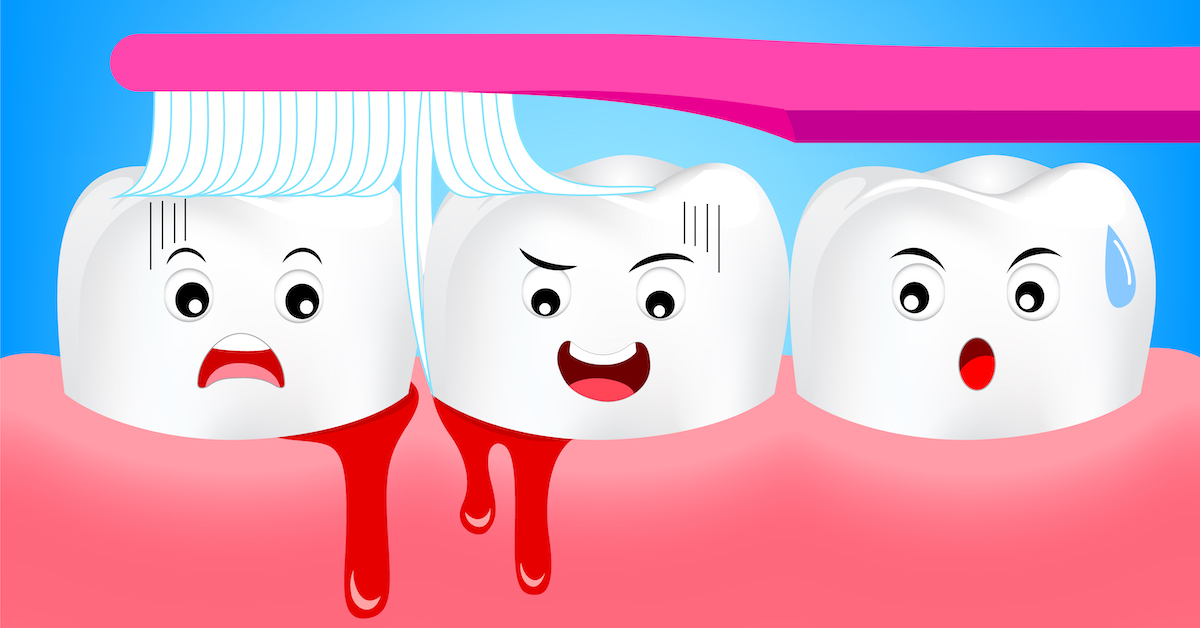Posted on: March 15, 2021
Understanding Gum Disease
While most people are aware of the dangers of tooth decay and cavities, they aren’t entirely aware of how harmful gum disease can be. Known clinically as periodontal disease, this group of diseases that affect the gums can lead to tooth loss and a variety of possibly dangerous health conditions. Becoming educated about the symptoms of periodontal disease is one of the best ways to prevent serious issues from occurring.
How Gum Disease Affects Your Health
You may have heard about gingivitis, but you may not be aware of what it is and how it differs from periodontal disease. Both gingivitis and periodontal disease are forms of gum disease that can occur in people of all ages. It is estimated that 75 percent of adults in the United States have gum disease and that only 15 percent of those people know that they have the condition. It is also estimated that almost 60 percent of teenagers who are 15 or older have some type of gum disease. While the majority of people can take steps to prevent the disease from occurring, there are approximately 30 percent of people who are diagnosed with gum disease because they have a genetic predisposition to develop it. However, all cases of early stage gum disease can be managed via the implementation of basic dental care habits. Establishing a good oral health care routine at home is an important part of prevention, treating and reversing gum disease. In order to protect your oral health, you need to know what the signs and symptoms of these conditions are.
Gingivitis is the earliest stage of periodontal disease. It is caused by bacteria building up within the tissues of your mouth. The word gingivitis means inflammation of the gums. Symptoms of gingivitis include red, swollen gums that bleed while you brush or floss your teeth. Gum disease is the most common cause of adults losing their teeth. However, it is easily prevented by properly caring for the teeth and gums.
How Does Gum Disease Develop?
The main causes of gum disease are plaque and bacteria; however, age and lifestyle factors can affect the amount of plaque and bacteria present within the mouth, making it imperative that you maintain an excellent dental care routine so that your teeth can remain in place. These factors include:
- Hormonal changes. Recent research has indicated that the fluctuations in hormones that women experience during puberty, monthly menstruation, pregnancy and menopause can cause the gums to be more sensitive and more prone to the development of gingivitis.
- Illnesses. Certain sicknesses and diseases can negatively impact your gums. Diabetes, cancer and HIV are some of the examples of diseases that can increase your risk of developing gum disease and cavities.
- Medications. Some prescription medications can have an effect on your oral health. Certain medications have side effects such as dry mouth. This condition consists of a decrease in saliva production, which prevents bacteria from being washed away from your teeth and gums. Some examples of drugs that can lead to dry mouth are anticonvulsants and anti-angina medications.
- Poor lifestyle habits. Using tobacco products of any kind leads to your gum tissue having issues with repairing itself. This contributes to more toxins being introduced into the mouth which can cause damage to the gums.
- Dental care neglect. If you fail to brush or floss your teeth on a daily basis, the bacteria present in your mouth will begin to build up. This eventually leads to inflammation and gum disease. Skipping out on seeing your dentist on a regular basis also leads to problems, as your mouth becomes susceptible to bacteria that you can’t remove via brushing and flossing.
How Do I Know If I Have Gum Disease?
Many people aren’t aware that they have periodontal disease until it has advanced significantly. The disease often progresses silently and doesn’t have many visible symptoms while in its early stages. However, if you know the signs, you may be able to catch the disease before it irreversibly damages your teeth and gums. Here are some of the symptoms that you need to be aware of:
- Gums that bleed during or after brushing your teeth
- Gums that are swollen, tender or red
- Bad breath that won’t go away
- Having a persistent bad taste in your mouth
- Receding gum line
- Formation of noticeable “pockets” in between the teeth and gums
- Teeth that are loose or shift easily
- Changes to your bite or in the way your dentures fit in your mouth
Important Facts About Gum Disease
Gingivitis that isn’t treated turns into periodontal disease. This advanced form of gum disease causes the gums and bone to pull away from the teeth, leading to the development of pockets between the gums and teeth. These pockets collect debris and eventually leads to infection. The buildup will eventually wear away the gum line and cause your teeth to become unstable.
Left untreated, plaque will spread under the gum line. The toxins produced by the bacteria within plaque cause irritation and inflammation. This causes the bone and tissue located underneath the teeth to wear down, leading to the gums and teeth separating from one another. This further destroys the supporting tissue and bone. Without treatment, the teeth may loosen and may even need to be removed. Periodontitis is sometimes found in patients with diabetes, respiratory diseases or heart ailments.
There are different types of periodontitis.
- Chronic periodontitis is most commonly found in adults. Its symptoms include inflammation in the supporting tissues, as well as the loss of attachment over time.
- Aggressive periodontitis usually happens to people who are otherwise healthy. This form of gum disease leads to the bone rapidly being destroyed as well as the loss of attachment of the gums and ligaments.
- Necrotizing periodontitis is commonly found in people with suppressed immune systems. Characteristics of this form of the disease include the death of gum tissue, periodontal ligaments and bone.
How to Prevent Gum Disease
- Maintain a diet that is low in starches and sugars.
- Brush your teeth twice a day with an ADA-approved toothpaste. If you can, brush after every meal. If you can’t, rinse out your mouth with water after you’ve eaten.
- Use an ADA-approved mouthwash after you’ve brushed. Swish for at least one minute.
- Thoroughly floss at least once a day.
Protecting Yourself from Gum Disease
Just because you don’t have any symptoms of gum disease doesn’t mean you don’t have it. There are hundreds of different kinds of bacteria present inside of your mouth. Bacteria can begin to appear again within 24 hours of a professional dental cleaning. Your dentist is the only person who can diagnose you with gum disease. Since gum disease can strike without any warning signs, it’s best that you routinely visit a dentist in Florida to ensure that you know as soon as the condition starts.
If you are susceptible to developing gum disease due to age, lifestyle or genetic factors, you will need to be sure that you brush your teeth and visit the dentist more often.
Maintaining your oral health via frequent visits to the dentist will help you to keep your smile beautiful and healthy.







